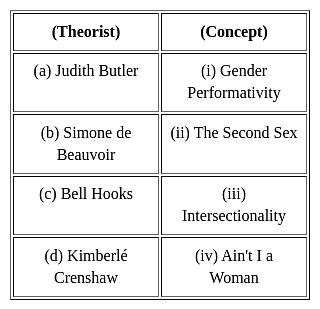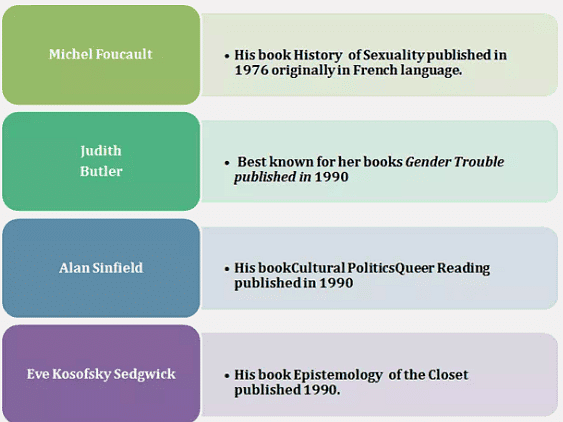APSET Paper 2 Mock Test - 10 (English) - AP TET MCQ
30 Questions MCQ Test - APSET Paper 2 Mock Test - 10 (English)
Which publication by Samuel Johnson was a significant contribution to non-fiction literature, serving as an authoritative reference for English language and literature?
Match the Feminist Theorist with Their Concept:


| 1 Crore+ students have signed up on EduRev. Have you? Download the App |
Which of the following best explains the emergence of creole languages?
Which of the following arrangements is in the correct Chronological sequence?
Who among the following was praised and patronized as a “Ploughman Poet”?
Emily Dickinson’s use of “open form” or “free verse” is comparable to her contemporary American poet,
Match the imaginary location with its creator :

Who among the following is not associated with Russian Formalism?
Which of the following was not a dialect of Old English?
The period of Queen Victoria 's reign is :
Given below are two statements one is labelled as Assertion and the other one is labelled as Reason.
Assertion: F. Scott Fitzgerald is often considered a key figure in the American Jazz Age.
Reason: His novel "The Great Gatsby" epitomizes the extravagance and despair of the era.
There are two lists given below. Match the authors in List I with their nationality in List II by choosing the right option against the code.

Which of the following is not Jacques Derrida’s work?
What is the speaker's emotional state at the beginning of the poem?
What is the significance of the "sun's occasional print" and the "brisk brief / Worry of wheels along the street outside"?
What does the speaker mean when they say that "suffering is exact"?
Christopher Marlowe was one of the first major writers to affirm what can be identified as a clearly homosexual sensibility. Which drama of his deals with it?
Match the items in List – I with items in List – II according to the code given below

From among the following, identify Coleridge’s companion in a fanciful scheme to establish a Utopian community of free love on the banks of the Susquehaina river?
In “Politics and the English Language” George Orwell provides a list of rules to aid in curing the English language. What is the final rule?


















